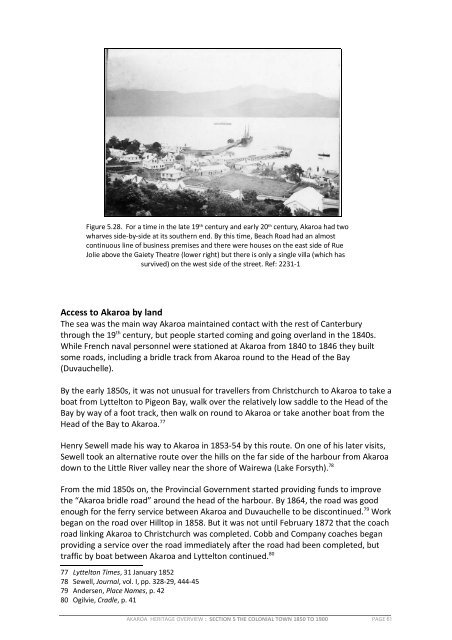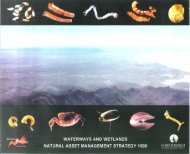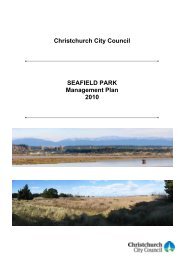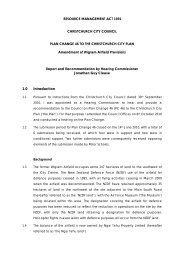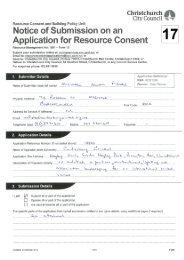Akaroa Historical Overview - Christchurch City Council
Akaroa Historical Overview - Christchurch City Council
Akaroa Historical Overview - Christchurch City Council
Create successful ePaper yourself
Turn your PDF publications into a flip-book with our unique Google optimized e-Paper software.
Figure 5.28. For a time in the late 19 th century and early 20 th century, <strong>Akaroa</strong> had two<br />
wharves side-by-side at its southern end. By this time, Beach Road had an almost<br />
continuous line of business premises and there were houses on the east side of Rue<br />
Jolie above the Gaiety Theatre (lower right) but there is only a single villa (which has<br />
survived) on the west side of the street. Ref: 2231-1<br />
Access to <strong>Akaroa</strong> by land<br />
The sea was the main way <strong>Akaroa</strong> maintained contact with the rest of Canterbury<br />
through the 19 th century, but people started coming and going overland in the 1840s.<br />
While French naval personnel were stationed at <strong>Akaroa</strong> from 1840 to 1846 they built<br />
some roads, including a bridle track from <strong>Akaroa</strong> round to the Head of the Bay<br />
(Duvauchelle).<br />
By the early 1850s, it was not unusual for travellers from <strong>Christchurch</strong> to <strong>Akaroa</strong> to take a<br />
boat from Lyttelton to Pigeon Bay, walk over the relatively low saddle to the Head of the<br />
Bay by way of a foot track, then walk on round to <strong>Akaroa</strong> or take another boat from the<br />
Head of the Bay to <strong>Akaroa</strong>. 77<br />
Henry Sewell made his way to <strong>Akaroa</strong> in 1853-54 by this route. On one of his later visits,<br />
Sewell took an alternative route over the hills on the far side of the harbour from <strong>Akaroa</strong><br />
down to the Little River valley near the shore of Wairewa (Lake Forsyth). 78<br />
From the mid 1850s on, the Provincial Government started providing funds to improve<br />
the “<strong>Akaroa</strong> bridle road” around the head of the harbour. By 1864, the road was good<br />
enough for the ferry service between <strong>Akaroa</strong> and Duvauchelle to be discontinued. 79 Work<br />
began on the road over Hilltop in 1858. But it was not until February 1872 that the coach<br />
road linking <strong>Akaroa</strong> to <strong>Christchurch</strong> was completed. Cobb and Company coaches began<br />
providing a service over the road immediately after the road had been completed, but<br />
traffic by boat between <strong>Akaroa</strong> and Lyttelton continued. 80<br />
77 Lyttelton Times, 31 January 1852<br />
78 Sewell, Journal, vol. I, pp. 328-29, 444-45<br />
79 Andersen, Place Names, p. 42<br />
80 Ogilvie, Cradle, p. 41<br />
AKAROA HERITAGE OVERVIEW : SECTION 5 THE COLONIAL TOWN 1850 TO 1900 PAGE 61


